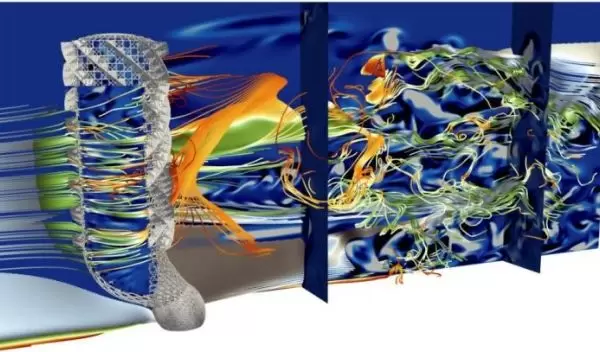
Glass sponges contain properties that may advance the design of ships, planes and skyscrapers
The remarkable structural properties of Euplectella aspergillum, the Venus flower basket sponge, might seem far removed from human-engineered structures. However, insights into how the organism's latticework of holes and ridges influences the hydrodynamics of seawater in its vicinity could lead to advanced designs for buildings, bridges, marine vehicles and aircraft, or anything that must respond safely to forces imposed by the flow of air or water.
While past research has investigated the structure of the sponge, there have been few studies of the hydrodynamic fields surrounding and penetrating the organism, and whether, beyond improving its mechanical properties, the skeletal motifs of E. aspergillum underlie the optimization of the flow physics within and beyond its body cavity.
A collaboration across three continents at the frontiers of physics, biology and engineering led by researchers Giacomo Falcucci at the Tor Vergata University in Rome, and Harvard University; Sauro Succi at the Italian Institute of Technology; and Maurizio Porfiri at the Tandon School of Engineering, New York University applied super-computational muscle and special software to gain a deeper understanding of these interactions. They created the first simulation of the deep-sea sponge and how it responds to and influences the flow of nearby water.
The U.S. National Science Foundation-funded work, published in Nature, reveals a profound connection between the sponge's structure and function, shedding light on both the basket sponge's ability to withstand the dynamic forces of the surrounding ocean and its ability to create a nutrient-rich vortex in its body cavity "basket."
To understand how Venus flower basket sponges do this, the team made extensive use of the Marconi100 exascale-class computer at the CINECA high performance computing center, which is capable of creating comprehensive simulations using billions of dynamic, temporospatial data points in 3D.
The researchers also used special software developed by study co-author Giorgio Amati of the Super Computing Applications and Innovation department at CINECA. The software enabled super-computational simulations based on Lattice Boltzmann methods, a class of computational fluid dynamics methods for complex systems that represents fluid as a collection of particles and tracks their behavior.
Jordan Berg, a program director in NSF's Directorate for Engineering, added that "this work is a reminder of how much nature can teach us about adapting to complex constraints. Looking only at structural properties, or only at flow characteristics, would miss the full story of this amazing animal's ability to withstand strong currents, feed, reproduce and thrive in a precarious environment."


